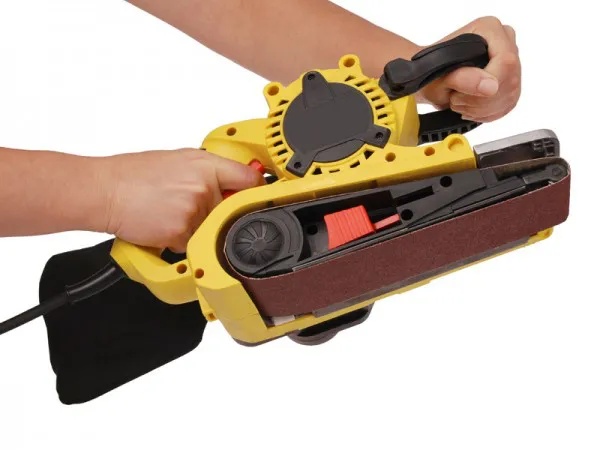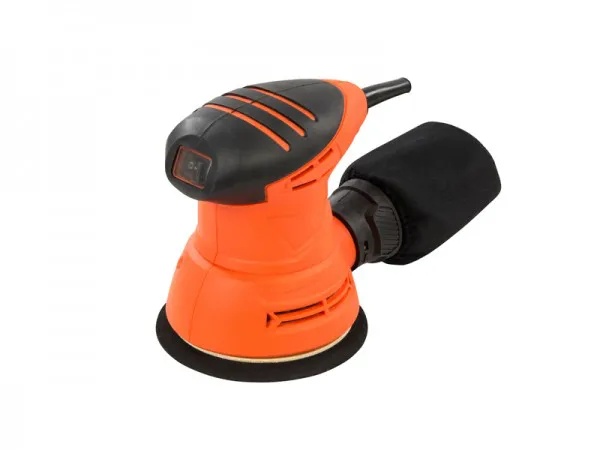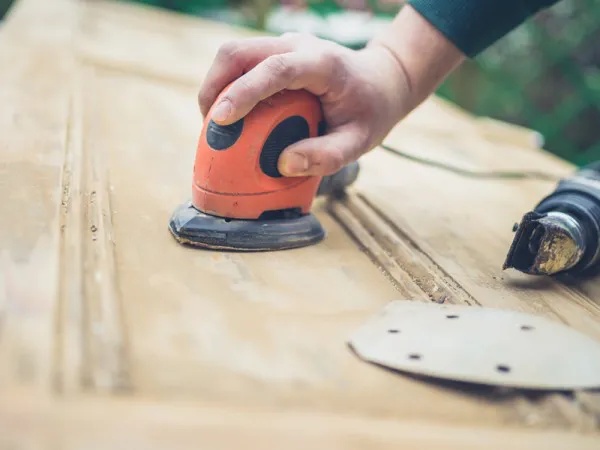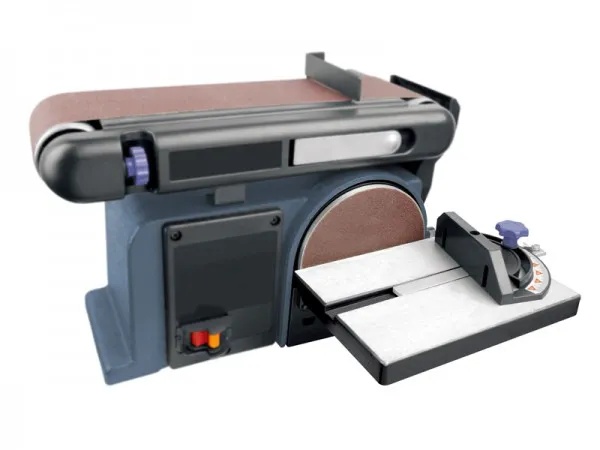Electric Sanders: A Short Guide to the Different Types
An electric sander isn’t a necessity when it comes to sanding wood.
But it sure makes the process A LOT easier. Over the years, manufacturers have rolled out electric sanders for about every variation of a woodworker’s needs.
Let’s have a look at the major types:
Belt Sander

Belt sanders are very popular. Most have two wheels visible from the side; these wheels hold and rotate a sanded belt. That belt fits over the wheels, like a track on a tank’s wheels. Electricity drives those wheels to action. These powerful machines are best for large and flat surfaces, like those on a door or tabletop.
Palm Sander

Perhaps the most forgiving type of electric sander, a palm sander is a good kind for a beginner to start with. It’s light, quiet, and easy to control. A palm sander has clamps that hold a sheet of sandpaper against an orbital rubber pad. This smooth, orbital movement lets a user move a sander in any direction, with or against the grain of a wood surface. A palm sander is a great option for general finishes.
This leads to a sibling type, the highly versatile, random-orbital sander. Random-orbital sanders use a sandpaper disc bound to a pad by either hook & loop (think Velcro) or peel & stick methods. The good: This type creates a smooth finish. The bad: It’s tougher to handle than a palm sander.
Detail Sander

These are the small sanders that have oddly shaped pads (triangles, etc.). They specialize on curves and in tight spaces. They are also ideal for places like around chair spindles, as the pad types work well in slots and grooves.
Belt-and-Disc Sander

This is a benchtop sander — meaning you don’t run the sander over wood, you run the wood over the sander. The standard configuration combines a small (6 in.) disc with a long, narrow belt sander (4×36). The disc part is perfect for sanding curved ends onto narrow boards. The belt sander part, by contrast, is great for sanding long, wide boards.
Other Sanders
For heavy-duty sanding, there are a few other electric sander options, such as:
These types of sanders tend to be used in larger, commercial environments rather than a DIY workshop.
Sanding isn’t the most glamorous part of woodworking, but it is critical for a fine finish. The good news is if you select the best weapon for your sanding battle, it doesn’t have to be a chore.
Did you know people RACE electric sanders? Read all about it!
Is there a topic in woodworking that you’d like to know more about? Maybe you’d like us to delve deeper into heavy-duty power sanders? Just leave a comment or reach out to us on social media!
Related Posts
5 Project Plans with Accuride Slides
June 6th, 2023
Has Your Drawer Slide Lost Its Smooth Movement?
June 5th, 2023
